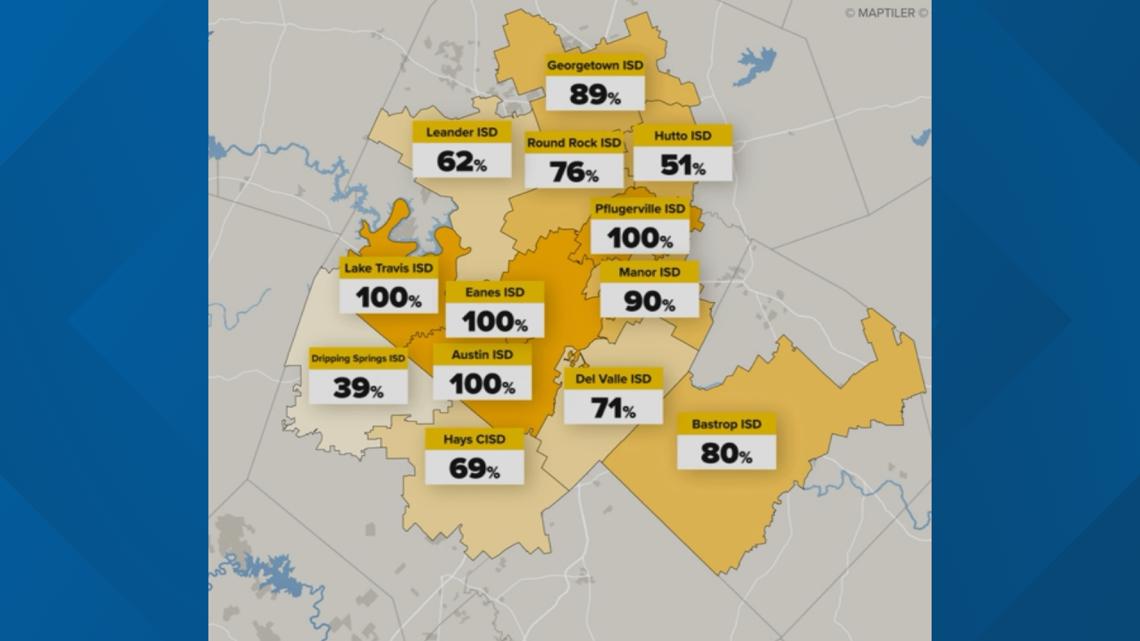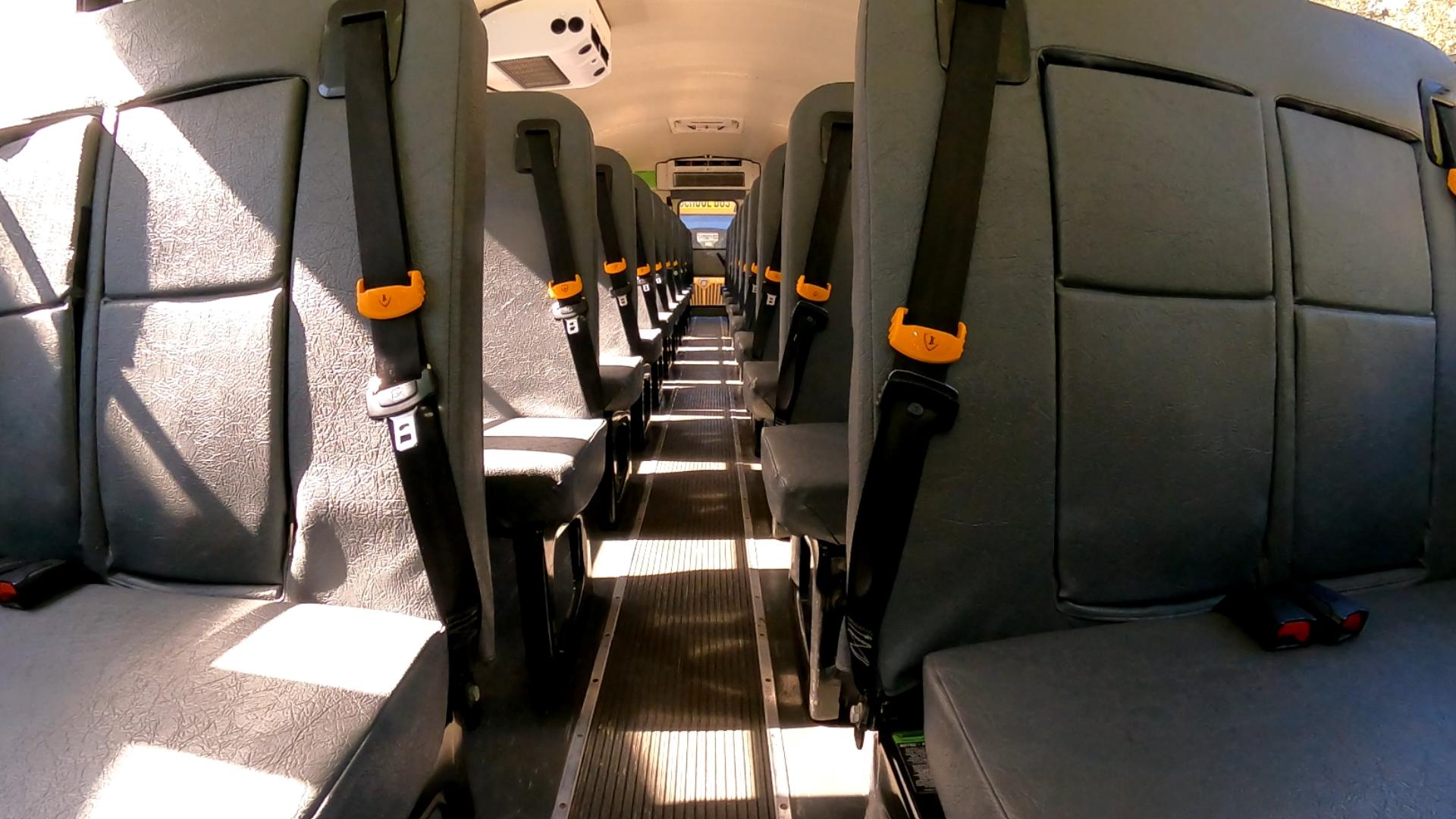AUSTIN, Texas —
The deadliest school bus crash in Texas in nearly a decade sparked outrage among parents in the Hays Consolidated Independent School District last spring. Their anger focused on why dozens of pre-kindergarten students took a field trip on a bus without seat belts. The district has since expedited plans to fully outfit its bus fleet with restraints.
But a joint KVUE Defenders/Austin American-Statesman investigation found tens of thousands of students across the state still travel to and from school each day with no seat belts – including many in Central Texas.
Kelvin and Melody Johnson still live with the pain of what happened that morning in September 2015.
Their daughter, Mariya, a high school senior in Houston, was on her way to school when a car struck her bus, toppling it over an overpass and onto a road below.
“That day, for me, is a day that I would never wish on another family,” Melody Johnson said. “She had goals. She had aspirations, and she was very determined.”
Kelvin Johnson added, “What we went through, I don’t wish this on anyone else in the world.”
Their daughter was one of two students killed that morning. The bus they were on was equipped with restraints, but the students were not wearing them at the time of the crash.
“Each time I hear of an accident, it is just like reliving it, revisiting it all over again. And so, I pray for those parents,” Melody Johnson said.
Those parents include everyone who had a child on Hays CISD Bus No. 1106 when an oncoming concrete pump truck struck it in March along Texas 21 in Bastrop County. Five-year-old Ulises Rodriguez Montoya died, and many of the 44 pre-kindergarten passengers were injured.
Authorities charged the driver of the truck, Jerry Hernandez, with manslaughter and criminally negligent homicide.
The Johnsons turned their grief to advocacy, asking their local state senator in 2017 for a new law to make Texas school buses safer. That law built upon an earlier measure from 2007, also born out of a deadly crash near Beaumont. The 2017 law requires school districts to install so-called three-point seat belts on all buses bought after 2017. But it grants exemptions if districts declare financial hardship and issue a public statement.
“We are not where we need to be because of loopholes,” Melody Johnson said.
What the data shows
Texas is one of only nine states with a law requiring seat belts on school buses. The KVUE Defenders and the Statesman reviewed what laws are on the books nationally and found that some states, like New York, have required seat belts on buses since 1987. Most laws are similar to Texas', requiring seat belts on all newly purchased buses after a certain date.
The KVUE Defenders and Statesman education reporter Keri Heath spent several months gathering school bus data from 13 Central Texas school districts to see whether their bus fleets have seat belts.
Among those districts, the Austin Independent School District was the first in the region to fully install 100% of its buses with seat belts. AISD’s transportation director, Kris Hafezizadeh, said the district began doing so in 2011 through grant money available at the time.
“We transport the most precious cargo that you can have,” he said.
The district’s buses also have signs on the door, reminding passengers to buckle up.
“It's good to have seat belts on buses, but we also need the help of our families and our parents and our community to make sure to tell their students when you're in the bus, put the seat belts on,” Hafezizadeh added.
Our analysis of the data from those 13 districts found only four local districts have fully outfitted their buses with seat belts. Along with Austin ISD, they are Lake Travis, Eanes and Pflugerville ISDs. Four of the local school districts – Bastrop, Georgetown, Manor and Round Rock ISDs – have seatbelts on at least 75% of their buses.
Another four districts – Leander, Hutto, Del Valle and Hays Consolidated ISDs – have seat belts on at least 50% of their bus fleets.
Of the districts surveyed, Dripping Springs ISD has the lowest proportion of buses with seat belts: only 39%.


Statewide, data from the Texas Education Agency shows that since the 2017 law, 99% of the new buses purchased by major urban districts – such as Dallas, Houston or Austin ISDs, for example – and 81% of the new buses purchased by rural districts – such as Thrall and Granger ISDs – had seat belts.
What is not known statewide, however, is the number of buses each Texas school district has kept on the road without seatbelts since the 2017 law.
Part of the problem, particularly in smaller communities, is a financial burden, according to Randy Willis, the executive director of the Texas Association of Rural Schools and the former superintendent in Granger. He said unlike more urban districts, rural ones do not have the ability to ask taxpayers as often for bond money for capital expenditures such as buses.
“Limited funding – I mean, it’s just that simple,” Willis said. “You are sitting there with a $5 million budget and 85% of your money is tied up in teachers and salaries, and you have 15% left for your entire program. So I just can’t run out and buy a new bus.”
Today, the Johnsons look at photographs from their daughter’s life and wonder what she would be doing today.
“There is a hole, there is a void. You still have questions because of her tenacity, her drive, her ambition,” Melody Johnson said.
And they still wonder whether she would have been spared had she been wearing a proper restraint.
“We send our kids out to school every day," Kelvin Johnson said. "And we expect them to come back home safe and sound."

